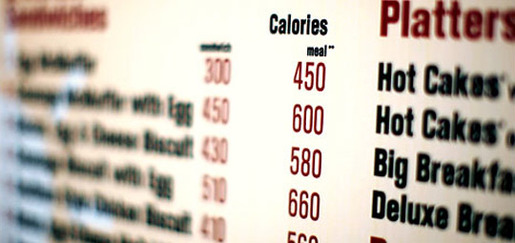Calorie Counts are a Dud

September is National Childhood Obesity Month, and the President marked the occasion with a proclamation calling on all Americans to “take action by learning about and engaging in activities that promote healthy eating and greater physical activity by all our Nation’s children.”
Obesity is a major issue; a third of American children and two thirds of adults are obese or overweight. So we must ask: how to fight it? For many policy-makers, the answer is better labeling. But is that enough?
Calorie labeling, whereby restaurants post the calorie contents of their menu items, has become a cause de jour in the public health community. Bloomberg’s New York City was an early experimenter. As is so often the case with the war on obesity, so goes the Big Apple, so goes America. The idea is contained in the sweeping health reform bill passed last year, with full implementation pending. (Britain is also experimenting with a voluntary version of the policy.)
For the public health community, calorie labeling fits with a larger view of obesity. Call it the McVictim Syndrome – that greedy corporations are taking advantage of Americans, conning them into buying unhealthy foods. Inform the masses, and they will slim down, or at least cut down on the junk food.
There’s only one problem: according to a slew of studies, calorie labeling seems to be a public-policy dud.
Consider a quick review of the literature.
October 2009. Researchers from Yale and the NYU School of Medicine publish a study in Health Affairs they tout as a “first look” at the impact of calorie counts in New York City. Result: “we did not detect a change in calories purchased after the introduction of calorie labeling.”
August 2010. Researchers from Stanford University and the National Bureau of Economic Research review sales data for New York City Starbucks. They conclude: “food calories per transaction fell by 14% (equal to 14 calories per transaction on average)” and beverage calories “did not substantially change” for a net calorie drop of just 6 percent per transaction.
January 2011. In the American Journal of Preventative Medicine, researchers from Duke – NUS Medical School tracked buying decisions in Taco Time franchises after a Washington State county passed a mandatory calorie posting law. They find: “No impact of the regulation on purchasing behavior was found. Trends in transactions and calories per transaction did not vary between control and intervention locations after the law was enacted.”
February 2011. The lead author of the first NYU study expanded on those results for the International Journal of Obesity, focusing on key groups: teens, parents and children in low-income neighborhoods. “We found no statistically significant differences in calories purchased before and after labeling.”
Four studies. Three failing grades and one marginal pass.
There has been just one hold out so far: New York City.
In a 2009 conference presentation, the Department of Health and Mental Hygiene reported that the law helped customers cut their consumption by an average 12.3% in lunches purchased at New York fast food restaurants.
But, with better collection of data and comparison, it seems that even New York data doesn’t support the New York initiative.
This summer, a paper published in the British Medical Journal suggests that calorie labeling doesn’t do much of anything.
Surveys were conducted by the New York for the months before and after the labeling took effect. The study’s novelty was its scope: researchers looked at a cross-section of all fast-food chains in New York City, and collected receipts from around 15,000 people.
And the results? Average calories bought showed no change. In fact, only about one in seven people claimed to even use the calorie information. Armed with information, people’s decisions were mixed: at McDonald’s they seemed to pick a bit better, but actually increased consumption of higher-cal foods at Subway.
Calorie labeling is popular among policy makers but it just doesn’t seem to work out. Frankly, that’s not exactly surprising – does anyone really order, say, a Big Mac with an extra large fries and assume it to be a healthful meal?
The President’s biggest anti-obesity initiative, in other words, will not work and issuing proclamations will not help. The President should send his advisors back to the drawing board.

